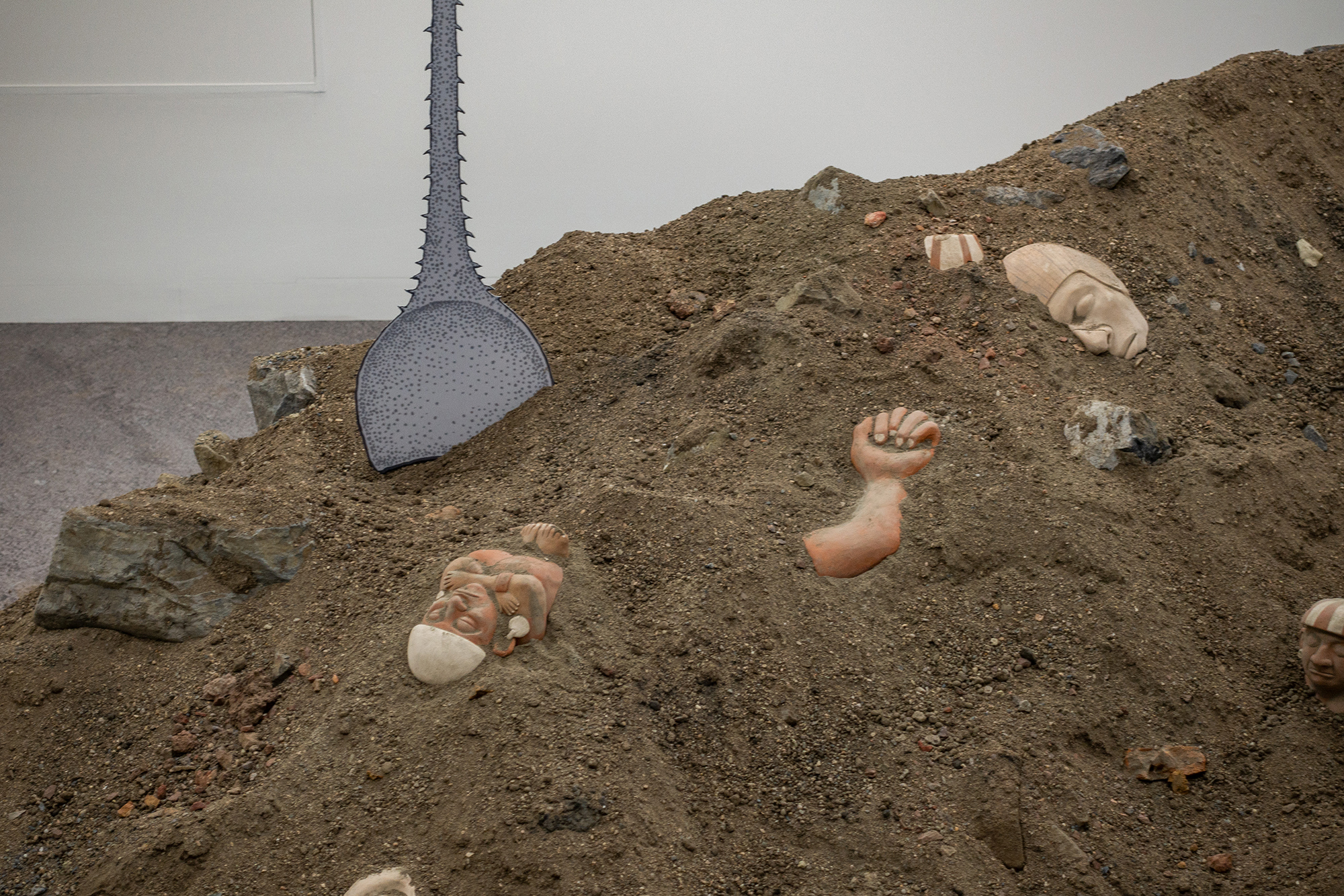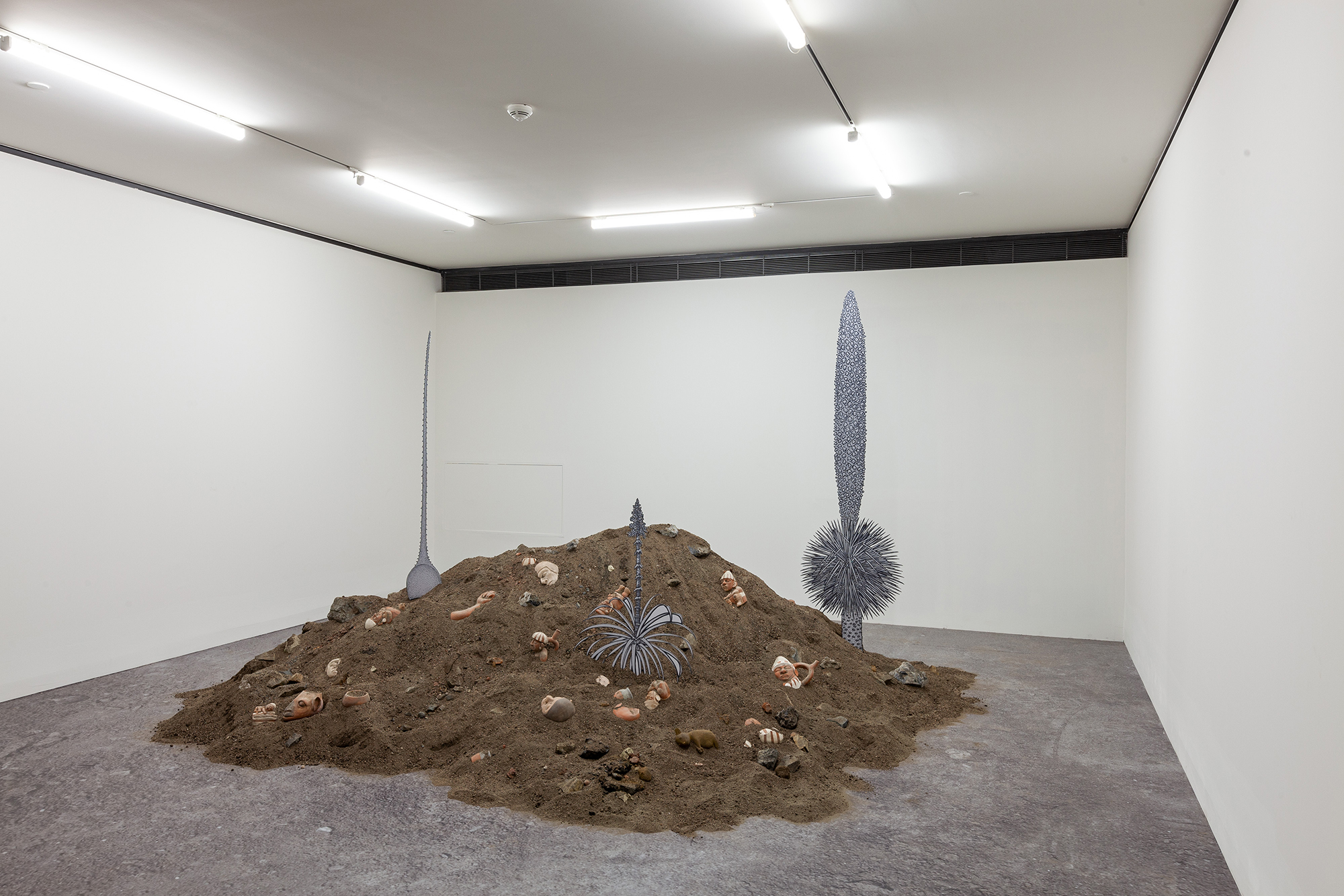Claudia Martinez Garay
[13 de março de 2020]

In 2018, I was part of the selection committee of the 21st edition of the Videobrasil Biennial, in São Paulo. One of the artists that impressed me the most impressed during the process was Claudia Martinez Garay.
Over the past decade her print work has seen her engage in an appropriation of images, culling pictures from their original context and using them to build new stories. Graduating in 2007 from the Pontifical Catholic University in Lima, her early work reflects on notions of archive and social memory, investigating the stories of violence in Peru and the photographs of the civil war that have helped build a sense of national identity. As an example, in “Peru advances” (2011) the artist copies historical portraits of four ex-presidents of Peru using small crabs. Known as animals that only walk backwards or sideways, the relation between their effigies and the material used is clearly ironic. This way of dealing with the historical past of the country seem to point more to forgetting that to permanence – and how to deal in a different way with a national history so traumatized by violence?

Since enrolling at the Rijksakademie, Amsterdam, in 2016, the artist has progressed to sculpture, installation and video. In The parade / The leftovers, Garay delved into the archives of the Van Abbemuseum in Eindhoven, and of the International Institute of Social History, in Amsterdam, where she found collections of posters of varied types and ideologies. Using these she made a set of paintings which isolate the iconography of these pamphlets, removing all contextual information, showing them installed overlapping each other on two parallel shelves, alongside a second set of paintings, abstract in appearance, grouped together, wall hung, in which just the background forms of the posters are replicated. As our eyes pivot between the sets of canvases the discourse of their source material is deconstructed – the backgrounds become geometric abstractions and the signs altogether suggest a new fictional narrative.
Likewise in El Creador (The Creator), made for the Istanbul Biennal in 2019, in which copies of Mochica ceramics, looted by colonial forces, peek from a mound of earth, ¡Somos aún! (We are, still!, 2018), an installation where she combines details of murals and ceramics from indigenous cultures, and the 2017 video Ñuqa kausakusaq qhepaykitapas (I will outlive you), a work where a Moche ceramics reflects about its own origin, the artist investigates forms and stories of the indigenous peoples of Peru. Objects that one day had precise applications and symbols, these fragmented artefacts are an invitation not only to our historic imagination but also to a necessity to decolonize the Eurocentric gaze towards them.


In her recent solo exhibition at Grimm in Amsterdam, Revolutions, like trees, are recognized by their fruits, the artist, now based in the Netherlands, showed large scale reproductions of fruits and flora from Peru (printed on free-standing shaped sheets of aluminium) in dialogue with small ceramics again in mimicry of Pre-Columbian Peruvian artifacts. These works are shown in rooms entirely painted in walls of yellow, turquoise and deep blue, an artificial environment that begs the blurs the shows intent a between document and mirage?


Touching subjects related to the historical and indigenous narratives of Peru - and the world - is urgent but Claudia Martinez Garay’s work also seems deeply interested in discussing the statute of the image in contemporary visual cultures. She dialogues with artists previously interested in the materiality of the printed image but does it in a fresh and experimental perspective using painting, drawing, printmaking and computer-generated imagery. We can try to reach the past through images but there’s always a layer of mystery in all of them – that’s what makes Garay’s practice so powerful and relevant in a world more and more iconophile.
(texto escrito originalmente para a ArtReview, edição de março de 2020)